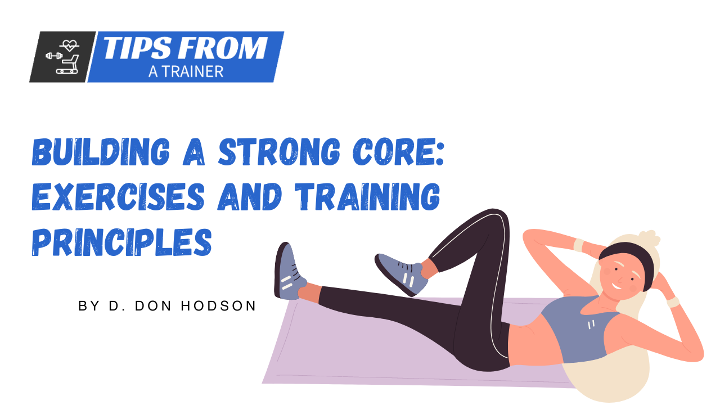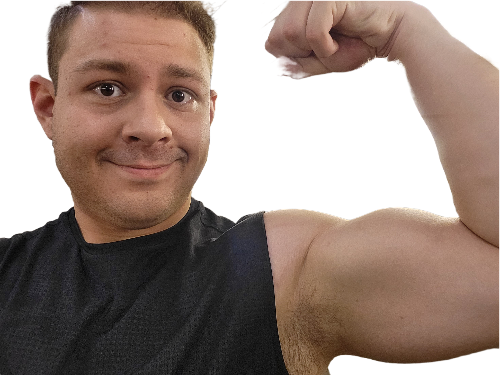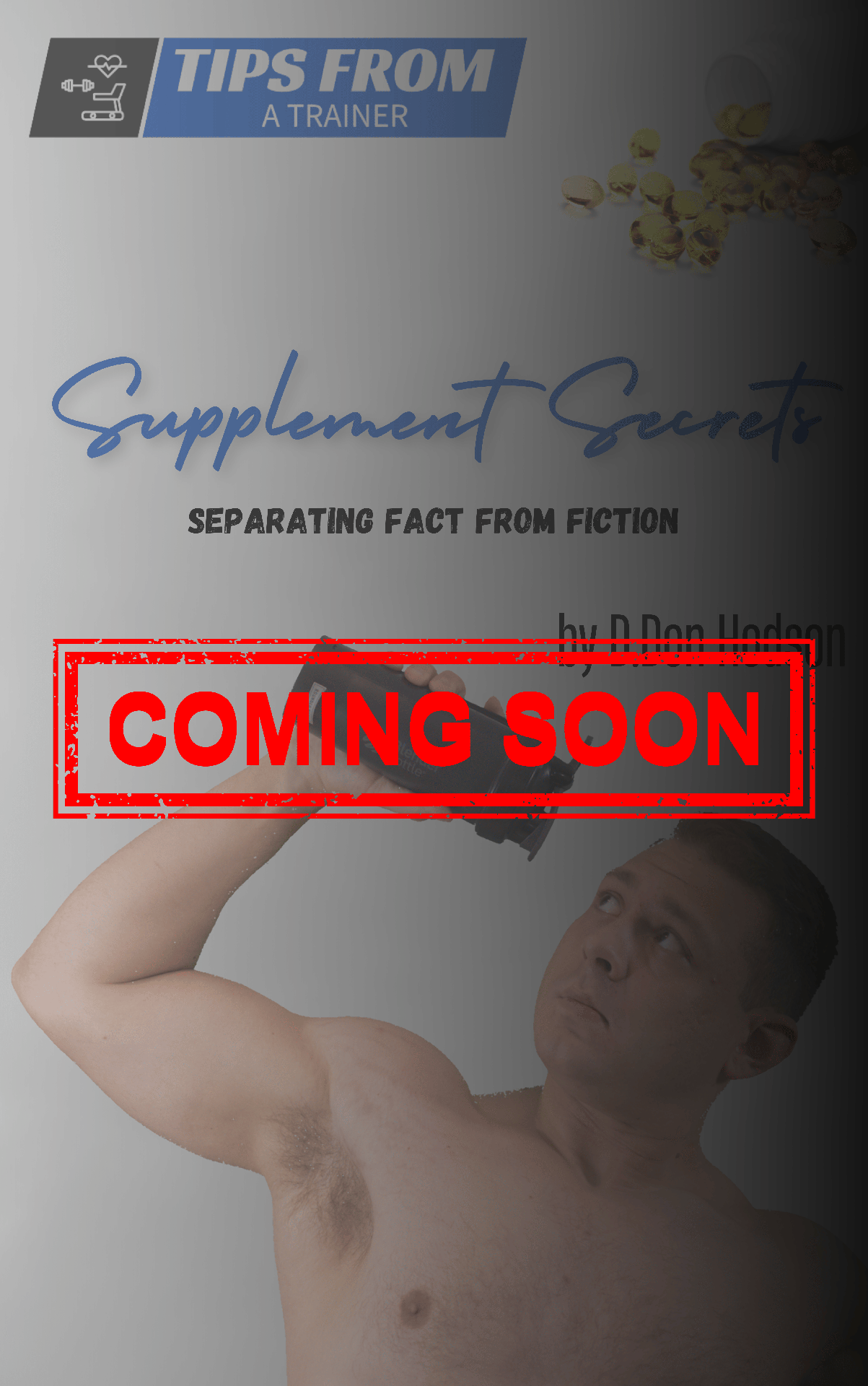Introduction
The Importance of a Strong Core
In the pursuit of a healthy and active lifestyle, the concept of a strong core has garnered significant attention. While many associate a strong core with the quest for well-defined abs, its significance extends far beyond aesthetics. A robust core forms the central pillar of our body, influencing our posture, balance, and movement patterns. It acts as a stabilizing force, facilitating everyday activities and athletic endeavors alike. Understanding the vital role that a strong core plays in our overall health and physical performance is crucial for constructing a comprehensive fitness regimen.
The Role of Core Strength in Overall Fitness
Imagine the core as the central hub of a wheel, with spokes radiating out to various aspects of physical fitness. A strong core serves as the linchpin that connects strength, stability, flexibility, and functionality. Whether you're lifting weights, engaging in sports, or simply going about your daily routine, your core muscles are actively involved. It is this centrality that underscores the importance of developing core strength as a foundational element of overall fitness.
Purpose of the Article
This article embarks on a comprehensive exploration of core training principles, exercises, and strategies aimed at fostering a strong and resilient core. By unraveling the anatomy of core muscles, delving into the benefits of core strength, and unraveling effective training techniques, we aim to equip readers with the knowledge needed to build a sturdy core foundation. Through a combination of understanding, practical guidance, and dedication, we endeavor to empower individuals on their journey toward building a strong core and achieving their fitness goals.
Table of Contents
Introduction
The Importance of a Strong Core
The Role of Core Strength in Overall Fitness
Purpose of the Article
Understanding the Core Muscles
Anatomy of the Core
Types of Core Muscles
Core Functionality and Everyday Movements
Benefits of a Strong Core
Improved Posture and Stability
Enhanced Athletic Performance
Injury Prevention and Pain Reduction
Effective Core Training Principles
Progressive Overload and Adaptation
Specificity of Core Exercises
Balance Between Strength and Flexibility
Core Strengthening Exercises
Foundational Exercises: Planks, Crunches, and Bridges
Dynamic Movements: Russian Twists, Bicycle Crunches, and Leg Raises
Functional and Unconventional Exercises: Medicine Ball Throws, Stability Ball Rollouts, and Hanging Leg Raises
Designing a Comprehensive Core Workout
Selecting Exercises for a Well-Rounded Routine
Structuring Sets, Reps, and Rest Intervals
Incorporating Core Training into Overall Fitness Plans
Common Mistakes and How to Avoid Them
Neglecting Proper Form and Technique
Overemphasizing Quantity Over Quality
Failing to Progress and Challenge the Core
Conclusion
The Path to a Stronger Core
Embracing Core Training as a Lifelong Journey

Understanding the Core Muscles
Anatomy of the Core
To truly comprehend the significance of core strength, we must first navigate the intricate landscape of its anatomy. The core is a complex region, comprising a group of muscles that collaborate to provide stability and support. Central to this ensemble is the rectus abdominis, often referred to as the "six-pack" muscles. Alongside it are the obliques, which run diagonally along the sides of the torso, and the transverse abdominis, a deep muscle that acts like a corset around the midsection. Completing the ensemble are the erector spinae, muscles that run along the spine's length and play a pivotal role in maintaining an upright posture.
Types of Core Muscles
The core muscles can be classified into two categories: stabilizers and movers. Stabilizers, such as the transverse abdominis, multifidus, and pelvic floor muscles, work diligently to maintain balance and control during static positions and dynamic movements. In contrast, movers, like the rectus abdominis and obliques, generate force and facilitate motion. The synchronization of these muscles is essential for optimal functionality, enabling us to perform a wide array of activities with precision and grace.
Core Functionality and Everyday Movements
The core's role extends beyond the gym and sports fields, influencing our daily routines in profound ways. When you reach for an object on a high shelf, your core muscles engage to stabilize your body. When you bend down to tie your shoelaces, your core supports your spine and prevents excessive strain. Even the act of sitting upright in a chair relies on core strength to maintain posture. As we navigate the demands of everyday life, our core muscles play a silent yet pivotal role, acting as the body's steadfast anchor and providing the foundation for efficient movement and biomechanics.
Benefits of a Strong Core
Improved Posture and Stability
A strong core serves as the body's internal stabilizer, playing a pivotal role in maintaining proper posture and spinal alignment. The muscles of the core work in synergy to support the spine and pelvis, preventing slouching and promoting an upright stance. When these muscles are well-developed, they counteract the effects of prolonged sitting or poor posture, reducing the risk of developing musculoskeletal imbalances. By cultivating good posture, individuals can alleviate strain on the back, neck, and shoulders, leading to increased comfort and overall physical well-being.
Enhanced Athletic Performance
Athletes across various disciplines recognize the significance of a strong core in optimizing their performance. Running, jumping, twisting, and throwing all require a stable base of support provided by the core muscles. A strong core enhances power transfer between the upper and lower body, allowing athletes to generate force efficiently and execute precise movements. Furthermore, core strength aids in maintaining balance during dynamic actions, making it an essential component in activities like gymnastics, martial arts, and dancing. Whether you're a competitive athlete or an individual seeking to improve your athletic capabilities, a strong core is the key to unlocking your full physical potential.
Injury Prevention and Pain Reduction
The core acts as a natural armor, shielding the body from potential injuries. By reinforcing the spine and stabilizing the pelvis, it reduces the risk of strain or trauma during movement. Individuals with weak core muscles are more susceptible to back pain, as the spine lacks adequate support and alignment. Strengthening the core helps distribute forces evenly, minimizing the strain on individual structures and reducing the likelihood of overuse injuries. Moreover, a strong core can help alleviate lower back pain by enhancing spinal stability and promoting proper movement mechanics. For those recovering from injuries, core training is often a crucial component of rehabilitation, aiding in the restoration of function and preventing future setbacks.
Effective Core Training Principles
Progressive Overload and Adaptation
The principle of progressive overload is a cornerstone of effective core training. Just as with other muscle groups, the core muscles respond to gradually increasing demands by becoming stronger. To elicit growth and improvement, it's essential to challenge the core progressively over time. This can be achieved by increasing resistance, adding complexity to exercises, or adjusting variables such as repetitions and sets. By imposing controlled stress on the core muscles, individuals promote muscular adaptation and development. It's important to strike a balance between providing adequate challenge and avoiding excessive strain, ensuring a gradual progression that allows the core to adapt and flourish.
Specificity of Core Exercises
Effective core training involves targeting different aspects of core strength through specific exercises. Core exercises can be categorized into stabilization, rotation, anti-extension, and anti-lateral flexion movements. Stabilization exercises, such as planks, focus on maintaining a rigid core position to enhance endurance and control. Rotation exercises, like Russian twists, engage the oblique muscles and improve rotational power. Anti-extension exercises, such as the dead bug, prevent overarching of the lower back by activating the deep core muscles. Anti-lateral flexion exercises, like side planks, strengthen the muscles that stabilize the spine against lateral forces. By incorporating a variety of exercises, individuals can develop a well-rounded core capable of meeting a range of functional demands.
Balance Between Strength and Flexibility
Core strength should be complemented by flexibility to create a harmonious balance. While core stability provides a solid foundation for movement, flexibility ensures that the muscles and joints can move through their full range of motion without restrictions. Imbalances between strength and flexibility can lead to inefficient movement patterns and increased risk of injury. Stretching exercises that target the core muscles, such as cat-cow stretches and spinal twists, can improve flexibility and contribute to overall core health. Integrating flexibility work into core training promotes optimal functionality and prevents limitations in movement, allowing individuals to navigate various physical activities with ease.
Core Strengthening Exercises
Foundational Exercises: Planks, Crunches, and Bridges
Foundational core exercises form the bedrock of any comprehensive core training routine. These exercises target key core muscles and provide a solid starting point for building core strength.
Planks
Planks are isometric exercises that engage the entire core, including the rectus abdominis, transverse abdominis, obliques, and lower back muscles. To perform a plank, begin in a push-up position, with your forearms on the ground and your body in a straight line from head to heels. Hold this position while engaging your core muscles, aiming to maintain proper alignment and stability.
Crunches
Crunches focus primarily on the upper abdominal muscles, the rectus abdominis. Lie on your back with your knees bent and feet flat on the floor. Place your hands behind your head and lift your shoulders off the ground by contracting your abs. Be sure to avoid pulling on your neck, using your core muscles to perform the movement.
Bridges
Bridges target the muscles of the lower back, glutes, and hamstrings, while also engaging the core for stability. Lie on your back with your knees bent and feet flat on the floor. Lift your hips off the ground, creating a diagonal line from your shoulders to your knees. Squeeze your glutes and engage your core throughout the movement.
Dynamic Movements: Russian Twists, Bicycle Crunches, and Leg Raises
Russian Twists
Russian twists target the obliques and improve rotational strength. Sit on the ground with your knees bent and feet lifted slightly off the floor. Hold a weight or medicine ball with both hands and twist your torso to one side, then the other, while balancing on your sit bones.
Bicycle Crunches
Bicycle crunches work the rectus abdominis and obliques in a twisting motion. Lie on your back and bring your hands behind your head. Lift your shoulders off the ground and simultaneously bring one knee toward your chest while twisting your torso to touch your opposite elbow to that knee. Alternate sides in a pedaling motion.
Leg Raises
Leg raises target the lower abdominal muscles. Lie on your back with your legs extended. Lift your legs off the ground while keeping them straight, then lower them back down without letting them touch the floor. Focus on using your lower abs to control the movement.
Functional and Unconventional Exercises: Medicine Ball Throws, Stability Ball Rollouts, and Hanging Leg Raises
Medicine Ball Throws
Medicine ball throws involve explosive movements that engage the entire core. Stand facing a wall and hold a medicine ball. With a slight squat, forcefully throw the ball against the wall, catching it on the rebound. This exercise simulates real-world movements and enhances core power.
Stability Ball Rollouts
Stability ball rollouts target the core while also working the shoulders and chest. Start in a kneeling position with your forearms on a stability ball. Roll the ball forward while maintaining a straight line from your head to your knees, then roll it back to the starting position.
Hanging Leg Raises
Hanging leg raises focus on lower abdominal strength. Hang from a pull-up bar with your arms extended. Lift your legs while keeping them straight until they are parallel to the ground, then lower them back down under control.
Designing a Comprehensive Core Workout
Selecting Exercises for a Well-Rounded Routine
When designing a comprehensive core workout, it's important to include exercises that target different areas of the core while also addressing stability and mobility. A well-rounded routine should encompass both foundational and dynamic movements, as well as functional and unconventional exercises.
Begin with foundational exercises such as planks, crunches, and bridges to establish a strong core base. Incorporate dynamic movements like Russian twists, bicycle crunches, and leg raises to promote functional strength and flexibility. Integrate functional and unconventional exercises such as medicine ball throws, stability ball rollouts, and hanging leg raises to challenge core stability in various ways.
Structuring Sets, Reps, and Rest Intervals
The structure of your core workout should be based on your fitness level, goals, and available time. Beginners may start with 2-3 sets of each exercise, performing 10-15 repetitions per set. Intermediate and advanced individuals can increase the intensity by adding more sets, increasing repetitions, or incorporating resistance.
Rest intervals are crucial for allowing the core muscles to recover between sets. Aim for 30-60 seconds of rest between sets to ensure that your muscles are adequately recovered for the next round of exercises.
Incorporating Core Training into Overall Fitness Plans
To maximize the benefits of core training, it's important to integrate core exercises into your overall fitness routine. Core exercises can be included as part of a full-body workout or as standalone sessions dedicated to core strength.
For a full-body workout, consider adding core exercises at the beginning or end of your routine. This approach ensures that your core muscles are engaged and activated before moving on to other muscle groups. Alternatively, you can dedicate specific days to core training, focusing solely on core exercises to target and challenge these muscles directly.
Incorporating core training into your overall fitness plan enhances your overall strength, stability, and performance, setting the foundation for a well-rounded and functional physique. As you progress in your core training journey, you'll witness improvements in your posture, athletic abilities, and overall quality of movement.
Common Mistakes and How to Avoid Them
Neglecting Proper Form and Technique
Proper form and technique are paramount in core training to ensure safety and optimal muscle engagement. Neglecting proper form can lead to ineffective workouts and even injury. When performing core exercises, focus on maintaining a neutral spine and avoiding excessive arching or rounding of the back. Keep your core muscles engaged throughout the movement and avoid using momentum to complete the exercise. It's important to prioritize quality over quantity, ensuring that each repetition is executed with precision and control.
Overemphasizing Quantity Over Quality
The misconception that more is better can lead to overemphasizing the quantity of repetitions rather than focusing on the quality of each movement. Performing countless repetitions without proper form and control may result in reduced effectiveness and increased risk of injury. Instead, concentrate on executing each repetition with deliberate and controlled movements. Gradually increase the number of repetitions and sets as your core strength improves, always prioritizing proper form and technique.
Failing to Progress and Challenge the Core
Stagnation in your core training routine can hinder progress and limit the development of core strength. Failing to progressively challenge your core muscles by increasing intensity, complexity, or resistance can lead to plateaus. To overcome this, regularly introduce new exercises, variations, or modifications to your routine. Gradually increase the difficulty of exercises or incorporate additional resistance to ensure continuous growth. Tracking your progress, such as increasing the weight lifted or the duration of holds, can help you monitor improvements and keep your core training effective.
Conclusion
The Path to a Stronger Core
Building a strong core is not only about aesthetics but also about enhancing your overall health, fitness, and performance. Through the exploration of core training principles, exercises, and strategies, this article has shed light on the multifaceted benefits of core strength. Improved posture, stability, enhanced athletic performance, injury prevention, and pain reduction are just a few of the rewards that come from dedicated core training.
Embracing Core Training as a Lifelong Journey
As you embark on your journey to strengthen your core, remember that it is a lifelong pursuit. Core training is not a one-time endeavor but a continuous commitment to your well-being. By integrating core exercises into your fitness routine and applying the principles discussed in this article, you have the opportunity to transform your physical capabilities and overall quality of life. Embrace core training as an essential part of your fitness journey and enjoy the lasting benefits it brings. Whether you're an athlete striving for peak performance or someone seeking improved daily functionality, building a strong core is an investment that pays dividends in every aspect of your life.

Don Hodson, Certified Personal Trainer
I'm Don, an ACE-certified personal trainer and the founder of Tips From A Trainer. With my passion for fitness and years of experience, I've helped countless individuals transform their physiques!
Having personally overcome weight challenges throughout my life, I understand the struggle. Through consistency, exercise, and a balanced diet, I have managed to stay in shape and I want to share my message with the world!
The fitness industry is fraught with misconceptions and deceptive practices, which is why I am committed to providing you with the truth.
- My Site: www.Don-Hodson.com
- My Company: www.ConnectedAgeMarketing.com

Building a Strong Core